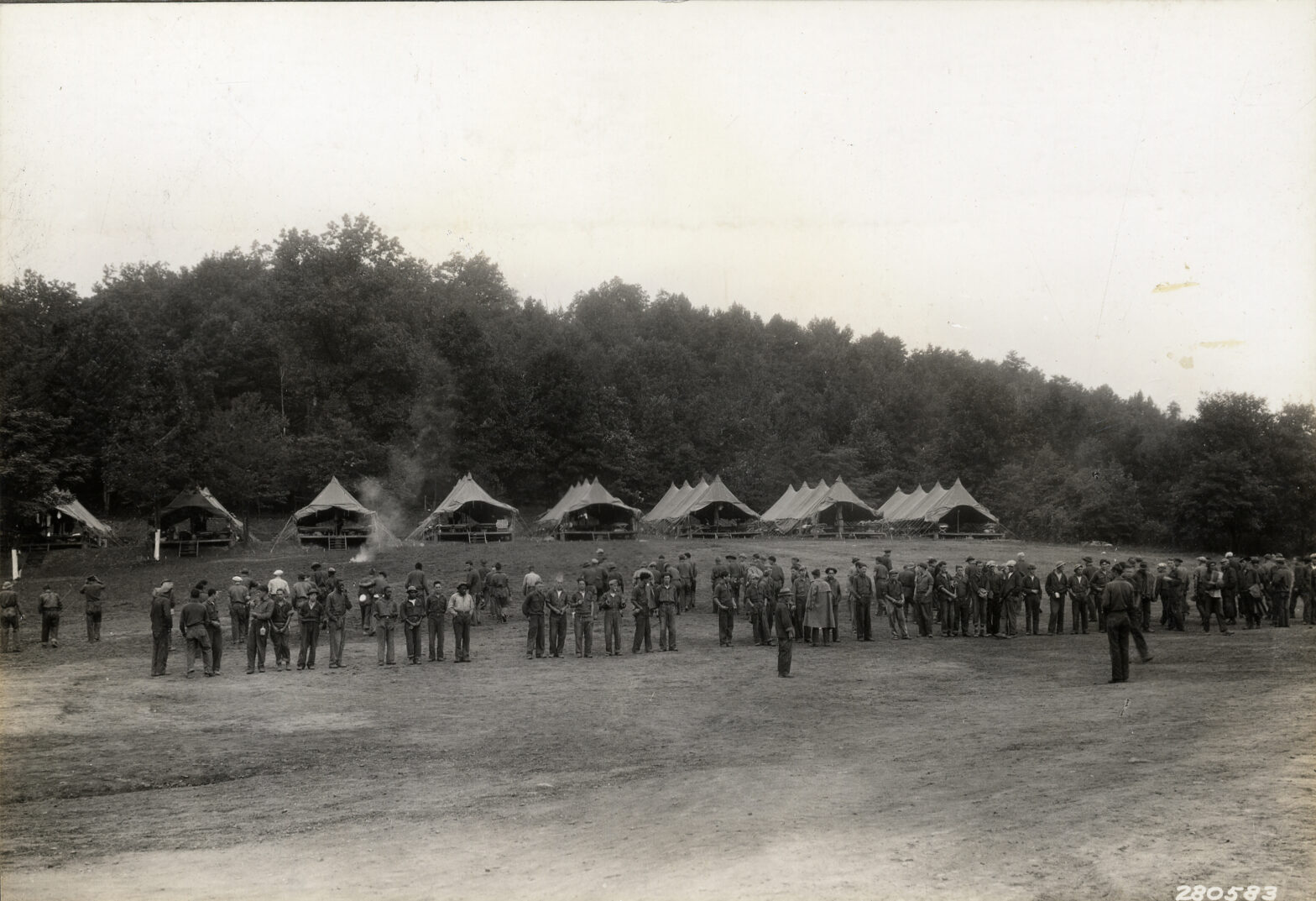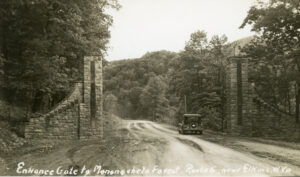
Did you know that Randolph County was home to 9 Civilian Conservation Corps (CCC) camps? The CCC was a work relief program that provided hundreds of thousands of jobs during the Great Depression as part of President FDR’s “New Deal”. In West Virginia, the CCC worked on forest service and state Park land to prevent fires, survey and protect wildlife, manage timber production, build roads, and develop recreation areas that are still enjoyed today. Although little remains of the camps themselves, the improvements made by these workers left a lasting legacy on our recreation infrastructure.
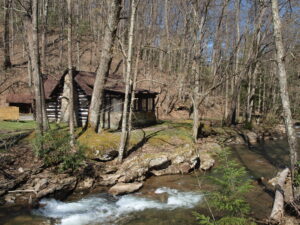
The CCC built some of most iconic structures in the National Forest including the “Gateway” to the Forest on Old Route 33 and Bickle Knob Observation Tower, which was originally one of several fire towers built by the Corps.
Two CCC camps built what is now Kumbrabow State Forest. Work projects at Kumbrabow included carrying out the function of a game refuge, timber production and recreational development like the construction of roads, hiking trails, pavilions, picnic areas, and cabins which are all used today. Each CCC camp included buildings like a kitchen and mess hall, recreational building, educational building, infirmary, and barracks. You can see the concrete remains of these buildings at the site of Camp Bowers at the southwest end of the state forest. The CCC-built cabins are available for rental at wvstateparks.com.

Camp Randolph was a tent camp occupied by Company 525 (header photo) from May 26th through November 20th, 1933. Each company had about 200 workers, otherwise known as enrollees, who worked for about $35 a month. Unlike most CCC companies, Company 525 was an integrated company with 189 white and 14 black enrollees. The company worked to build Stuart Recreation Area, including its three wooden pavilions. Stuart Recreation Area is located along the Shavers Fork River in the Monongahela National Forest, and is a popular destination for camping, swimming, fishing, and hiking. The campsites and pavilions are available to rent at recreation.gov
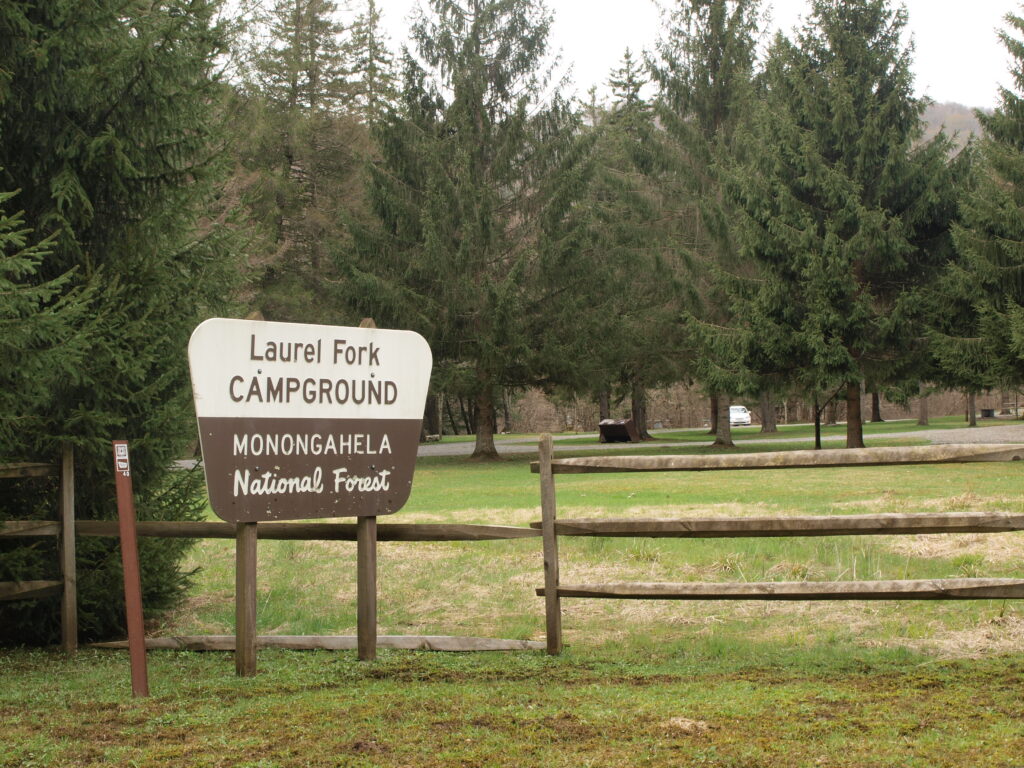
Camp Laurel Fork was occupied from May 20th, 1933 until July 10th, 1937. Located on the Laurel Fork of the Cheat River 12 miles south of Wymer, it is now the site of Laurel Fork Campground which offers primitive camping and 18 miles of hiking trails. CCC projects here included forest protection and improvement work in the Cheat District of the Monongahela National Forest, including the construction of Middle Mountain Road (FR 14). Campsites are available on a first-come, first-serve basis. The nearby Middle Mountain Cabins were built by crews from Camp Thornwood in Pocahontas County.
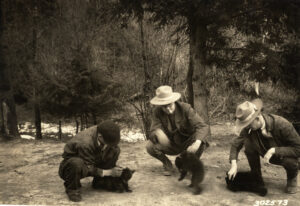
Workers at Camp Tygart improved the water and sewer systems for the Tygart Valley Homestead, which was another New Deal project spear-headed by First Lady Eleanor Roosevelt.
Randolph County had the second-most camps of all counties in West Virginia with Pocahontas County having 11. The nine camps were organized under three agencies:
CCC Camps under the USDA Forest Service:
– Camp Glady Fork- 1933-1937, 5 miles north of Alpena, now Lower Glady Dispersed Campground.
– Camp Laurel Fork- 1933-1937, 12 miles south of Wymer, now Laurel Fork Campground.
– Camp Randolph- 5/26/33-11/20/33, now Stuart Recreation Area.
– Camp Hutton- 1935-1938, Forest Service Road 26, south of Huttonsville.
– Camp Cheat Mountain-1940-1941, Forest Service Road 92 near junction with FR 47.
– Camp Scott- 1940-1941, WV Route 29, 8 miles south of Whitmer.
C.C.C. Camps under the WV Conservation Commission Division of Forestry:
– Camp Bowers-1935-1941, Kumbrabow State Forest
– Camp Randolph(#3)-1935-1937, Elkwater, Half of a mile north of the Kumbrabow State Forest Road.
C.C.C. Camp under the USDA Soil Conservation Service:
– Camp Tygart-1935-1942, near Tygart Valley Homestead in Dailey.
Each company was administered by a Company Commander, and each camp was administered by a Project Superintendent. Each camp typically had a doctor, an engineer, a forester, a mechanic, and a blacksmith. CCC projects in the Monongahela National Forest were directed by the Forest Supervisor, like Arthur Wood who was the longest serving supervisor at the time.
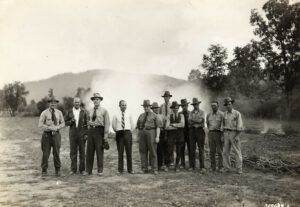
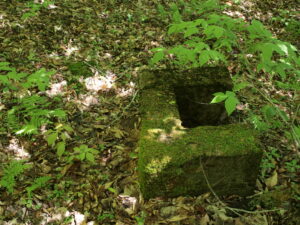
To learn more about the Civilian Conservation Corps in West Virginia visit the CCC Camp Museum in Quiet Dell, or read the book The C.C.C. Camps in West Virginia 1933-1942 by Milton Harr.
Follow Beverly-Randolph Heritage Tourism on Facebook or Instagram to learn more about the history and culture of Randolph County.
